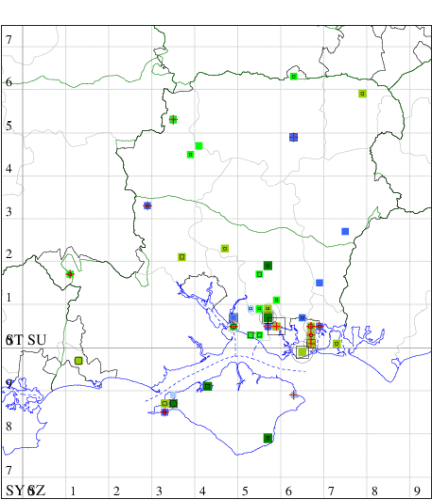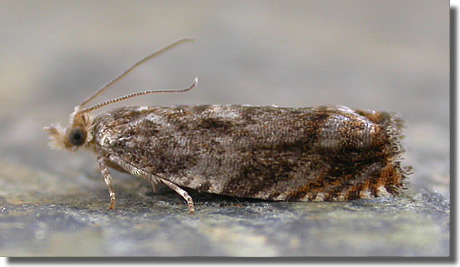Epinotia abbreviana
Checklist Number49.234 [B&F: 1150]
Verification
Record will normally be accepted but photo evidence may be required - check with CMR if not sure of identity
Classification
| Family: | Tortricidae |
| Subfamily: | Olethreutinae |
| Genus: | Epinotia |
| Species: | abbreviana |
| Authority: | (Fabricius, 1794) |
Common in hedgerows and woodland throughout much of the British Isles, favouring low-lying areas. In Hampshire still fairly common, especially in the south-east, with scattered records in the north, but largely absent from the New Forest and on the Isle of Wight, where there are only two recent records. Wingspan 12-16 mm. Well-marked specimens are characterised by the well-defined basal patch, which is angular medially and broadly edged throughout with the light ground colour, and the median fascia being more or less edged throughout distally with plumbeous strigulation; in dark or almost unicolorous specimens this plumbeous strigulation is still evident [Bradley]. Larva feeds on buds of Elm, revealing a highly distinctive arc of holes, subsequently living within a spun leaf.


The abundance in each month is indicated as follows:
 No records
No records Very occasional
Very occasional Irregular
Irregular Uncommon
Uncommon Off-peak, but not unusual
Off-peak, but not unusual Off-peak, but not unusual
Off-peak, but not unusual Main flight time
Main flight time| J | F | M | A | M | J | J | A | S | O | N | D | |
|---|---|---|---|---|---|---|---|---|---|---|---|---|
| Adult |  |  |  |  |  |  |  |  |  |  |  |  |
| Larval |  |  |  |  |  |  |  |  |  |  |  |  |




